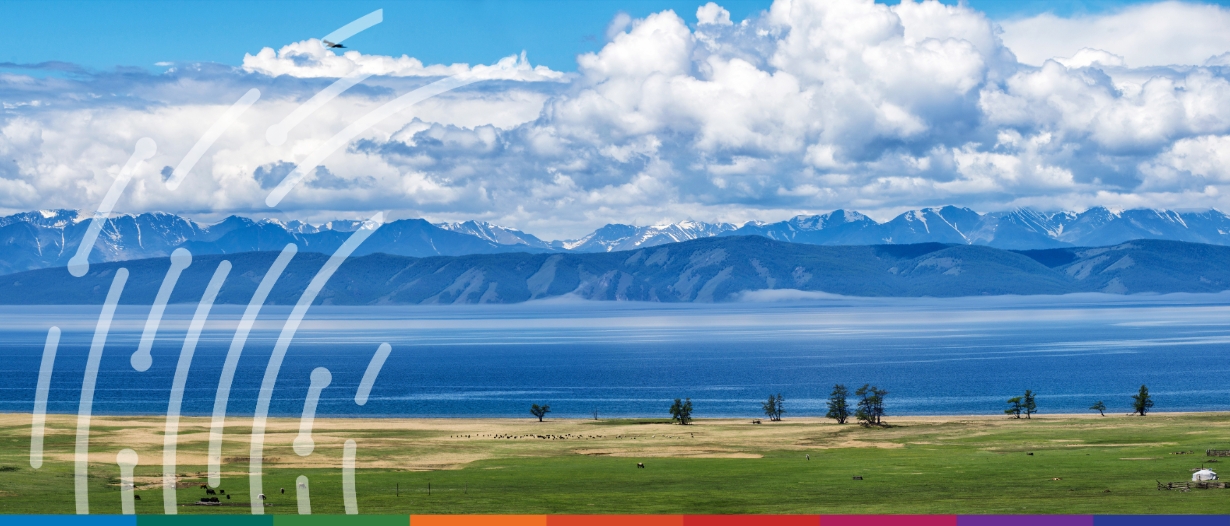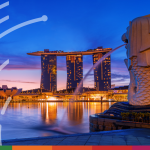- Mongolia’s long-term development policy, Vision 2050, intends to bolster sustainable governance and management.
- Climate-related disasters and agricultural mismanagement contributed to environmental degradation.
- But with concerted strategy and investment, Mongolia’s environmental trajectory looks promising.
To effectively address climate action and build resilience in Mongolia, attention must be directed to three critical areas: livestock, forests, and water. These sectors are central to the Government of Mongolia’s ‘Vision 2050’ initiative, particularly its pledge to “protect the planet Earth and its pristine nature”.
Vision 2050 outlines a phased approach to managing Mongolia’s natural capital and ecosystem services:
- 2010-2030: Asses the value of natural resources and carrying capacity
- 2031-2040: Increase resource efficiency and value
- 2041-2050: Maintain ecosystem balance sustainably
The nature of the problem
The livestock sector is a vital component of the Mongolian economy, constituting 88% of Mongolia’s agricultural GDP. Unfortunately, it also contributes significantly to environmental degradation.
Their remarkable 105% increase in agricultural output is primarily driven by an unsustainable surge in livestock numbers rather than enhancements in productivity or quality. By 2020, the livestock population soared to 65 million, vastly exceeding the land’s carrying capacity of 25 million, resulting in rampant overgrazing and severe land degradation.
Climate-related disasters, including droughts and dzuds (extreme winter weather events with temperatures dropping to -30°C or lower, accompanied by strong winds, heavy snow, and ice) further complicate this issue, leading to substantial livestock losses.
The 2023-2024 dzud in Mongolia brought the highest snowfall in nearly five decades, affecting 90% of territory and killing over 5.9 million livestock, more than 9% of the total population. This cost the government around 5% of its emergency relief budget: which could’ve been mitigated through better disaster prevention, and market-based insurance mechanisms.
Mongolia’s meat industry, a key economic sector, is particularly exposed to climate change. In 2015, meat production reached 448.3 thousand tons, but less than 3% were processed through large-scale mechanised means. The industry’s potential to become a global leader in the organic meat trade is hindered by extreme weather events, insufficient certification capacity, transport and logistics constraints, and a lack of knowledge and technical skills for sustainable management of production and supply chains.
While the livestock sector remains crucial, particularly through exports, it faces fragmented value chains, low transport connectivity, and price volatility. These issues, coupled with pasture deterioration and increased vulnerability to transboundary animal diseases, hinder the sector’s growth potential.
The World Bank’s Agenda for Action: Key Policy Recommendations for Mongolia’s Sustainable Development Vision suggests increasing investment in irrigation infrastructure, and combining agropastoral practices to enhance soil health, biodiversity, and carbon sequestration (the capturing and storing of atmospheric carbon dioxide).
Tending the forest
Mongolia’s forests cover approximately 8% of the country. However, illegal logging and overgrazing have caused significant deforestation. The government and local communities have established Forest User Groups (FUGs) to protect these areas; in 2018, there were 1,281 FUGs managing 3.3 million hectares of forest. Nevertheless, forestry management and knowledge of carbon sequestration potential remain limited across parties.
As such, the World Bank recommends strengthening state capacity to support FUGs, and the government has launched initiatives focused on reforestation and afforestation to restore degraded forests.
International donors have also contributed to forest conservation efforts, underscoring the importance of collaborative action. The European Investment Bank (EIB) Global has agreed to work with Mongolia to address the degradation and overgrazing of grasslands in Mongolia.
The EIB will provide €54.4 million to support the ASDIP program, which aims to upgrade infrastructure, improve flood protection, and promote sustainable agricultural practices. The program is expected to create 160,000 jobs, protect 29 million hectares of grassland, and save 126 million tonnes of CO2 equivalent. Additionally, the EU-Mongolia Forest Partnership will support tree planting and sustainable forest management.
Sustainable supply chain management
Mongolia has made strides in developing value chains for livestock products like cashmere, meat, and dairy, investing in modernising livestock infrastructure and improving animal husbandry. Value chains are also being bolstered to insulate the economy from price volatility. International organisations and private investors have also shown increased interest in the sector, recognising its economic potential if managed sustainably.
In 2016, Mongolia approved the National Green Development Policy (NGDP) Action Plan for 2016-2030, providing a national framework with goals focused on sustainable consumption and production, ecosystem preservation, investment in natural capital, human development, and green technology. Efforts to expand international trade include Mongolia’s ratifying the WTO Trade Facilitation Agreement (TFA) in 2016 and bilateral trade agreements with 43 countries. Initiatives such as the Mongolia-China-Russia Economic Corridor and free trade agreements with South Korea and China are also underway.
Although animal products like cashmere and wool account for a small share of foreign markets, agriculture, identified as a priority sector in Mongolia’s Sustainable Development Vision 2030 (SDV), holds potential for green beef and cashmere production. Mongolia aims to improve agricultural supply chains, introduce eco-friendly storage and packaging technologies, and increase the processing of raw materials like leather, wool, and cashmere. To support green agriculture, Mongolia introduced the “Certified Organic” label in 2014, with a law regulating organic food coming into force in 2017. The country also initiated a resolution on sustainable infrastructure at the 4th session of the United Nations Environment Assembly (UNEA 4), facilitating trade and access to regional value chains.
Water management
Water resource management is an urgent issue in Mongolia, particularly as rapid urbanisation strains local infrastructure and governance. Of the 34 major floods in Mongolia between in the last century, 60% occurred between 2000 and 2009, resulting in approximately $10 million in damages. As flood intensity is expected to increase, investing in flood protection infrastructure is crucial.
Water quality management is also poor due to industrial runoff, agricultural practices, and untreated waste. In response Mongolia’s Engineering Master Plan 2030 and the Water Pollution Free Law of 2019 outline infrastructure investments, as recommended by the World Bank. Construction is underway of wastewater treatment plants, pipelines, and dams. International organisations have also provided funding and technical assistance.
Nevertheless, additional investments are necessary. Mongolia faces a critical water shortage due to its heavy reliance on groundwater and limited surface water resources, further exacerbated by unsustainable extraction practices that have led to declining groundwater levels and quality.
Managed Aquifer Recharge (MAR) offers a promising solution by intentionally replenishing aquifers through water capture and storage, thereby enhancing availability and quality while mitigating the impacts of climate change. The Asian Development Bank (ADB) has supported three MAR pilot projects to assess their feasibility and effectiveness. To expand the potential of MAR, recommendations include:
- Conducting additional pilot projects in diverse locations to refine techniques
- Developing a structured implementation framework
- Streamlining regulatory processes to expedite approvals
- Building local expertise
These projects reduce reliance on unsuitable groundwater sources and improve water security, but start-up costs are high. Therefore, innovative financing options, such as green funds and public-private partnerships, should be explored to share costs and leverage expertise, alongside seeking international funding and technical assistance.
–
Mongolia’s Vision 2050 initiative offers a comprehensive framework for addressing climate action and resilience. By focusing on sustainable livestock practices, forest conservation, and water resource management, and by making strategic investments in infrastructure and policy reforms, Mongolia can mitigate climate impacts and promote long-term economic growth. International collaboration and domestic policy improvements will be key to achieving these ambitious goals.
Through its determined efforts and forward-thinking approach, Mongolia is positioning itself as a budding regional leader in sustainability and climate resilience, setting a commendable example for other nations in a similar situation and with similar constraints.





























